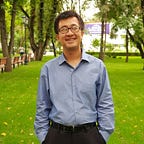Laghman and Languages, Connecting Cultures
October 10, 2015 was a day of many first memories- My first day in Ürümqi, my first Uyghur friend, and my first time tasting Uyghur laghman, delicious hand-pulled noodles topped with with stir-fries of meat and vegetables.
My first local friend, Gulmire (name changed to protect her privacy) was a student at Xinjiang University. Even though we only met an hour before, she showered me with hospitality. We started with a stroll through her college campus. When Gulmire found out that I haven’t tried laghman before, she gasped with disbelief and told me: NO! that is NOT okay! You cannot leave here without trying laghman!
She took me to a tiny, family run ashxana (the Uyghur word for a small eatery), right on campus. It was lunch time, and the cozy little restaurant was packed with hungry students devouring their noodles while gossiping with their friends, code-switching between Uyghur and Mandarin.
Üy laghmann! Guiru laghman! The ashxana owner, a Uyghur woman in her late 30s, moved swiftly from table to table, bringing every guest a complementary pot of the house qara chai and yelling orders back to the kitchen. There seemed to be no time for extra chit-chat, but there was a feeling of community and comfort in the air.
To this day, it was the most memorable laghman I have ever savored. Not just the taste- yes, it was pure heaven- the chewy, tender freshly pulled noodles combined with the juicy, meaty stir fry that overwhelmed my taste buds.
It was the conversation we had. We talked about the simple things we shared- from our love for language and cultures to sharing stories of college life in China and the US. We started opening up, and I shared with her the motivations of my trip to her homeland. We took a brief walk through the Erdaoqiao neighborhood, the Uyghur part of town always bustling with organic life and culture. She asked me about my experience as in the overseas Han Chinese diaspora living and growing up in America, how I liked it, whether it’s difficult.
Suddenly I realized that we were both minorities in our communities. Me as a Chinese American living in the US, and she as an ethnic Uyghur living in China. Two very different circumstances, but a common perspective to continue a conversation.
What about you? Do you feel like Uyghurs face any discrimination? I tried to ask cautiously, almost whispering “Of course!” Gulmire blurted out loudly, but quickly lowered her voice….Of course we do…哎, 怎么说呢。。。” 😞She didn’t say more, nor did I pressure her to at the moment. At that moment, her mom called and she had to go. I thanked her and we said goodbye.
I no longer talk to Gulmire. Many terrible things happened. From 2017, she, along with many other Uyghur friends, started deleting me from from Chinese social media. Some of them started posting strange updates filled with propaganda, nationalist messages and Chinese flag emojis, before deleting me altogether.
Oh, what can I do to just sit down with my long-lost friends again, for a simple, sincere conversation over laghman and qara chai?
To learn more about the current Uyghur human rights crisis and read more about Uyghur culture, follow these accounts on Instagram @uyghurprojectig @uyghurcollective @doppalife
